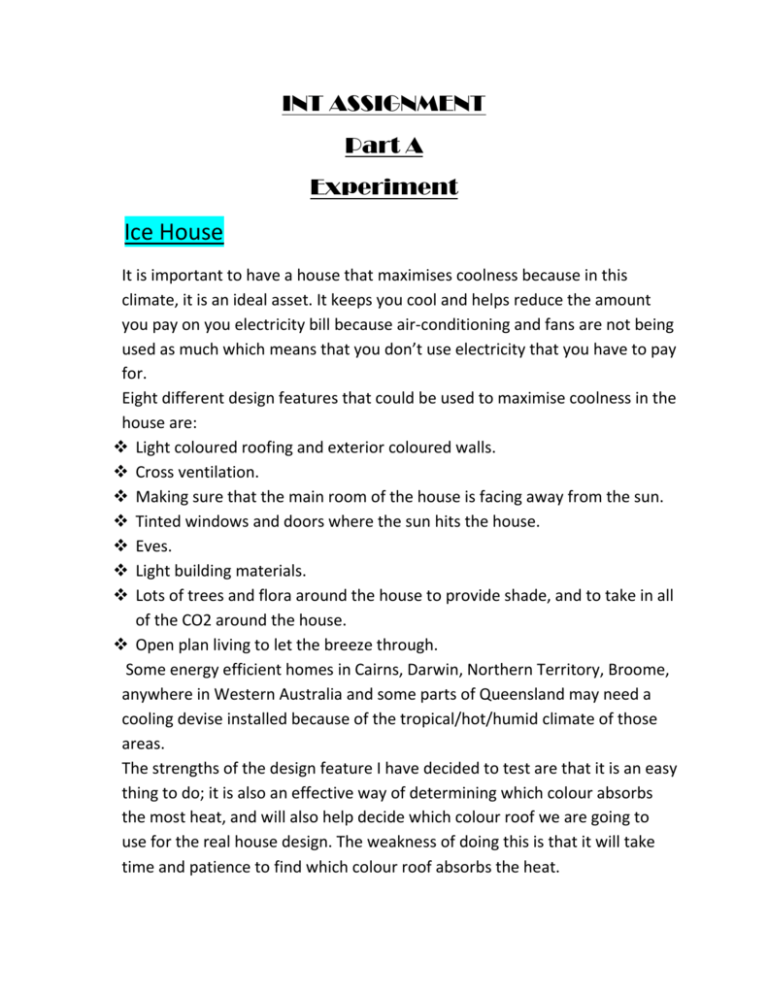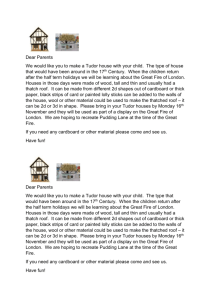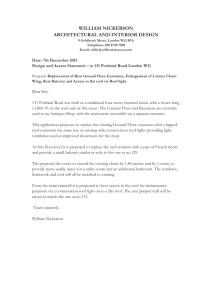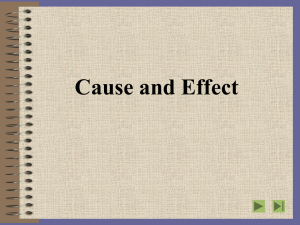INT ASSIGNMENT PART A
advertisement

INT ASSIGNMENT Part A Experiment Ice House It is important to have a house that maximises coolness because in this climate, it is an ideal asset. It keeps you cool and helps reduce the amount you pay on you electricity bill because air-conditioning and fans are not being used as much which means that you don’t use electricity that you have to pay for. Eight different design features that could be used to maximise coolness in the house are: Light coloured roofing and exterior coloured walls. Cross ventilation. Making sure that the main room of the house is facing away from the sun. Tinted windows and doors where the sun hits the house. Eves. Light building materials. Lots of trees and flora around the house to provide shade, and to take in all of the CO2 around the house. Open plan living to let the breeze through. Some energy efficient homes in Cairns, Darwin, Northern Territory, Broome, anywhere in Western Australia and some parts of Queensland may need a cooling devise installed because of the tropical/hot/humid climate of those areas. The strengths of the design feature I have decided to test are that it is an easy thing to do; it is also an effective way of determining which colour absorbs the most heat, and will also help decide which colour roof we are going to use for the real house design. The weakness of doing this is that it will take time and patience to find which colour roof absorbs the heat. Variables: All mini houses have different coloured rooves. Aim: To find which coloured roof stays the coolest during the day. Hypothesis: The cream roof will stay cooler than the other coloured houses. Materials: Cardboard Paddle pop sticks Craft glue Sticky tape Red, black and cream paint Paint brushes Scissors Method: Step 1) Make the base and structure out of paddle pop sticks. (x3) Step 2) Paint cardboard white, cut out a small window from 1 wall in each house and glue onto the structure. (x3) Step 3) Cut out rooves from left over cardboard and paint. (Red, black and grey. x3) Step 4) place ice cubes in houses and set out in the sun. Ice House Results 70 60 Time taken to melt. (in minutes) 50 40 30 20 10 0 10:30am Cream Series1 62 Red Black 60 60 2:30pm Cream 50 Red Black 51 49 Average Cream 56 Table of Ice House Results. CREAM RED BLACK 10:30 am 62 mins 60 mins 60 mins 2:30 pm 50 mins 51 mins 49 mins Average 56 mins 55 mins 54 mins Red Black 55 54 The cool homes that we constructed were very effective in the fact that that we could tell easily which house was more heat resistant. The cream house- as we thought would be the best for keeping the ice cool. The black house as we guessed would be the most absorbent and make the ice cube melt. Our results revealed that the cream coloured roof would be the best coloured roof to keep the ice cube cool, because it is very reflective. The red coloured roof wasn’t the best to keep the ice cube but it was still better than the black roof which helped the ice melt in less than 60 minutes. Because the sun was not at its hottest at 10:30 am, it took longer for the heat to radiate through the roof. But at 2:30 when the sun was full bore, its rays went through the houses really quickly and melted the ice fast. My hypothesis was correct. The cream roof was the most efficient in keeping the ice cube cool. And I was right when I said that the black roof would probably absorb the most heat. And you could tell from the feel of the roof that it was the hottest inside and out. The cream roof would be the most effective in keeping occupants cool. I would use the information I discovered to keep my energy efficient home cool by painting the roof a light/ reflective color which slows down absorption. This then keeps the people in the home cool and uses less energy for cooling. The strengths and weaknesses of the cool home test would have to be that it was fun to do, it was a very hands on activity during the beginning and was an interesting test to perform. But it was also time consuming and tedious because we made three houses and three rooves. But that also made it faster to complete instead of one house and three rooves. Some problems that we experienced during the test are the actual construction of the houses. It was hard to get the paddle pop sticks to stay upright, and for the walls to stay together. I think we could improve our model houses by changing the way we built them in the way that we scrap the paddle pop stick structure idea, and just use cardboard and sticky tape, and perhaps make the roofing more stable. ( make a base for each of the roofs)






